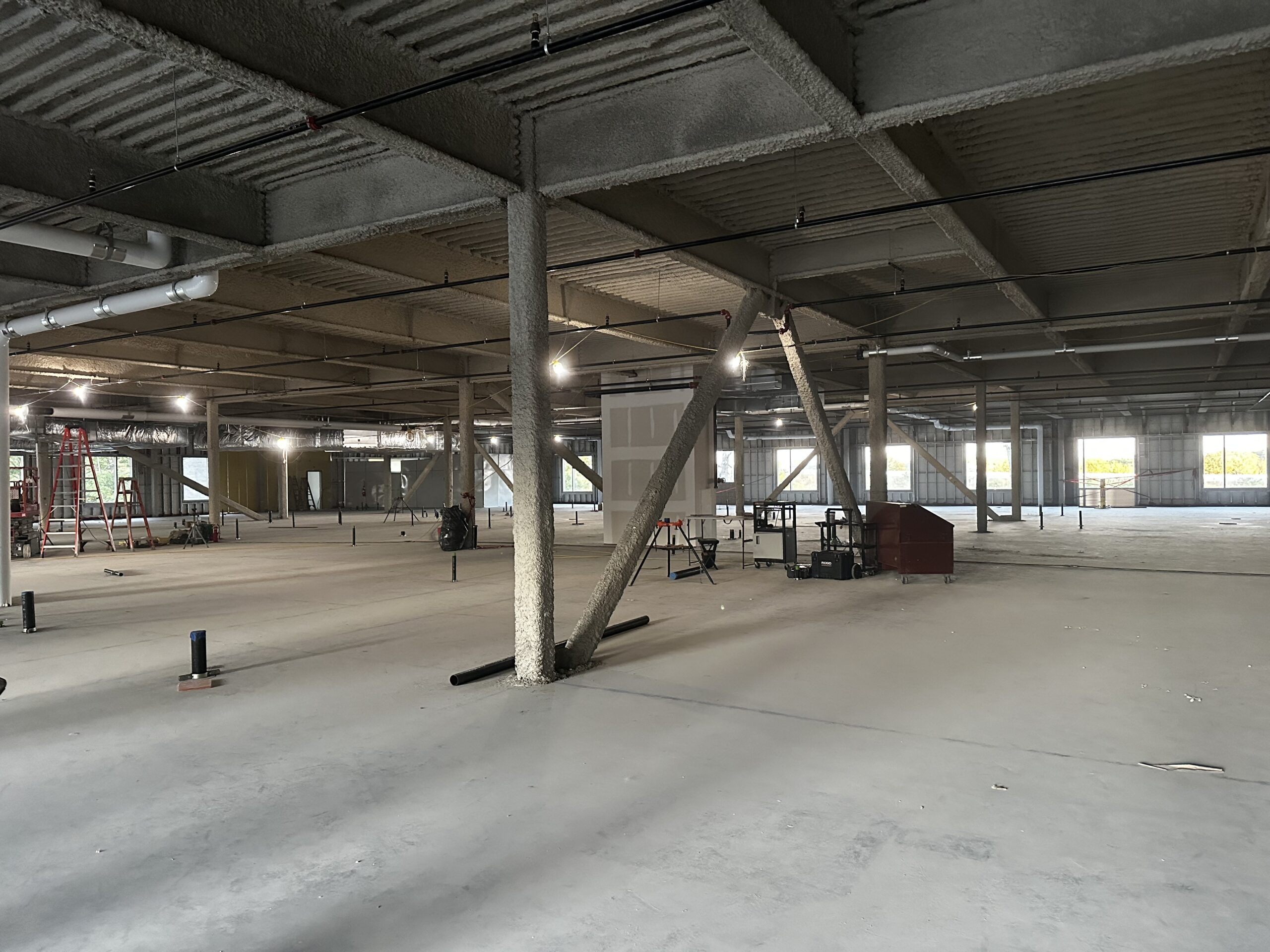Breast Reduction at Plastic + Hand
Enlarged breast tissue can contribute to pain and shoulder grooving. These symptoms may affect your ability to perform your daily activities and may even affect your work. In addition to physical pain, women may suffer emotional pain from large, pendulous breast tissue.
Trained at the country’s top medical centers, Plastic + Hand surgeons have the depth of experience and skills necessary to perform your breast reduction surgery safely and successfully…all right here in Maine.
What does breast reduction involve?
During breast reduction, incisions are made around the areola and on the skin of the breast. The areola is reduced in size, while breast tissue is removed and sent to a pathologist for review. Excess skin is removed, and the breast is reshaped.
The reshaped breast will have incisions closed around the areola, from the areola inferiorly to the mammary fold and along the mammary fold. A drain will be placed and then removed the following day. Some pre-existing asymmetries between the breasts may persist.
The procedure is often performed as a day surgery at our accredited Plastic + Hand Surgery Center.
Breast Reduction 3-D Animation
What should I expect after breast reduction?
After the procedure, your breasts will be swollen and may be bruised, but you will have a surgical bra to provide support and comfort. The day after surgery, you will return to have the drain removed and your breasts checked. After several days, you will be allowed to shower. You may require pain medication in the post-operative period.
How long is recovery from breast reduction?
You can’t shortcut the process to surgical recovery, but you’ll heal much faster (with much less frustration) if you dedicate yourself to full healing in the first two to three weeks of breast reduction post-op.
Breast reduction surgery requires rearranging of the breast tissue which causes a lot of swelling in recovery. This is normal and necessary healing, and swelling may last for several months, although your (surgeon-provided) surgical bra will help provide comfort and support. While a compression garment is recommended for the first six weeks, you may choose to switch to a sports bra as the swelling goes down and the surgical bra may start to feel loose.
While swelling is inevitable in the post-op stage, the degree of it will largely be determined by you. If you planned ahead for proper rest and you take it easy, you can keep your swelling under control and put yourself on a path to faster recovery. On the flipside of this, if you do too much, you’ll not only run the risk of opening incisions and swelling more, but you’ll also have a longer (and more frustrating) recovery process. When you embrace the downtime, you’ll get back to feeling like yourself much faster.
How soon can I resume activity after breast reduction?
While your surgeon will provide specific recommendations post-op, here are some general recommendations:
- At 2 weeks: Other than possibly working from home on the computer, rest is the priority.
- At 4 weeks: You can return to the office and most normal sedentary activities.
- At 5-6 weeks: You can likely resume other physical activities like workouts, heavier housework, and regular everyday activity.
In general, the last place to heal tends to be at the “triple point,” under the base of the breast where the vertical and horizontal incision meet up, especially where a lot of sutures were needed for surgery. It’s not uncommon to “feel” this spot the most as you recover in these initial six weeks.
If you have specific questions about resuming activities after your breast reduction, please discuss it directly with your surgeon.
Who are the best candidates for breast reduction?
Breast reduction involves an individualized approach, which is tailored to the unique makeup of each patient.
Breast reduction may be a good choice for you if:
- you have shoulder grooving
- the tissue under your breast is irritated and inflamed
- your breast tissue inhibits you from performing daily activities
- you are healthy
- your neck and back have pain from your large breasts
How should I get ready for breast reduction?
Before your breast reduction, you will meet with your surgeon. You will discuss the limitations and risks of surgery, the indications and outcomes of surgery, and the placement of incisions during surgery. In addition, you will have an examination of your breasts and skin quality, and measurements of nipple and areola position will be taken.
As with all surgery, it’s important to discuss the following with your Plastic + Hand surgeon:
- Medications you take
- What your expectations are
- Previous surgery
- Family history and any results of mammograms
Should I stop nicotine use before a breast reduction?
Yes. This is an incredibly important medical requirement if you’re seriously considering breast reduction surgery. Nicotine affects the blood supply since it causes blood vessels to constrict down. In breast reduction surgery, this area is rearranged, and (by the nature of surgery) there will be decreased blood flow to certain areas. Nicotine further complicates this if the blood can’t get where it needs to go, ultimately preventing proper healing. In general, you should plan to stop any nicotine exposure for at least three weeks before surgery, and not resume any use until you’re fully healed.
How long after breast reduction will I know my size?
The ultimate goal for breast reduction surgery is to create a breast size that is proportional to your body. In determining the right proportional size, most surgeons will not guarantee a cup size, but instead will work closely with you on achieving the best breast size and shape that helps alleviate symptoms and gives you the appearance that you want.
Shortly after surgery, you’ll get a good sense of how your breasts will look, but swelling is expected and normal for several months (plan for bra shopping after the three-month mark). As for scars, breast skin tends to scar fairy well, and breast reduction scars should soften/fade well by the one-year mark, and are easily concealed by bras, swimsuits, and clothing in the meantime.
After recovery, you’ll experience the final outcome of breast reduction surgery – a new appearance with smaller, shapelier breasts, and an improved quality of life without the pain and symptoms of disproportionately large breasts.
Does insurance cover breast reduction?
Generally, insurance will cover breast surgery that is deemed medically necessary, like a breast reduction surgery. However, not all breast reductions are medically necessary, and your insurance company will make this decision.
In determining if a breast reduction will be covered by insurance, this primarily requires proof of symptomatic macromastia (e.g., when large breasts cause pain and other physical problems) which can be proven with supportive documentation such as:
- Breast reduction consultation (that ultimately leads to an estimation of how much breast tissue will be removed).
- Documentation from other medical professionals (i.e., PCP, physical therapist, chiropractor, massage therapist) that provide proof of treatment methods.
- Medications taken to alleviate symptoms including over-the-counter pain relievers, prescribed muscle relaxers, as well as rash creams and powders.
- Other non-surgical methods to relieve pain (i.e., special bras, custom fittings).
It’s important to note that insurance will not cover a mastopexy, more commonly known as a breast lift. A breast lift is a cosmetic procedure that reshapes breasts to give them a firmer and rounder look, primarily reducing extra skin around the breast and reducing the size of the areola. While some techniques and incisions are similar between a lift and reduction, only the breast reduction is medically necessary.
How much is a breast reduction?
You’ll first discuss your breast reduction procedure options with your Plastic + Hand surgeon. During your initial consultation, your surgeon will evaluate your medical history, your breast reduction expectations, and set realistic goals for your breast reduction. Your Plastic + Hand surgeon will then recommend the breast reduction procedure that will offer the best results for your desired outcome.
After this personalized consultation, our Patient Care Coordinator will prepare a cost estimate that is specific to your upcoming breast reduction procedure. In this specific surgery, your breast reduction cost will largely be dependent on what your insurance has approved to cover. Additional costs vary by cosmetic surgery procedure, but all estimates include pre- and post-op visits, anesthesia, and use of the surgery facility. Our Patient Care Coordinator will also discuss payment options with you.
With a Plastic + Hand surgeon, you’ll get the results you want with the respect you deserve…all right here in Maine.
OUR PLASTIC + HAND SURGEONS ARE THE MOST TRUSTED TEAM FOR BREAST REDUCTION PROCEDURES IN MAINE
If you’re considering a breast reduction to alleviate symptoms, bring your body in better proportion, or boost your self-esteem, our Plastic + Hand team has the most qualified breast reduction surgeons in Maine.
With training from some of the top medical centers in the U.S. (including Harvard, Yale, Stanford, UCSF, Mayo Clinic), Plastic + Hand surgeons have the depth of experience and skills necessary to perform your breast reduction safely and successfully in the comfort of our accredited outpatient Plastic + Hand Surgery Center located on-site here in Portland, Maine.
It’s time to discover the results you’ll love. The first step begins here.
Schedule time to talk with us
Each and every patient is unique. It’s important to us that we listen to our patients from the outset, so a consultation with our experienced Patient Care Coordinator is the first step in determining whether breast reduction surgery is appropriate for you.










